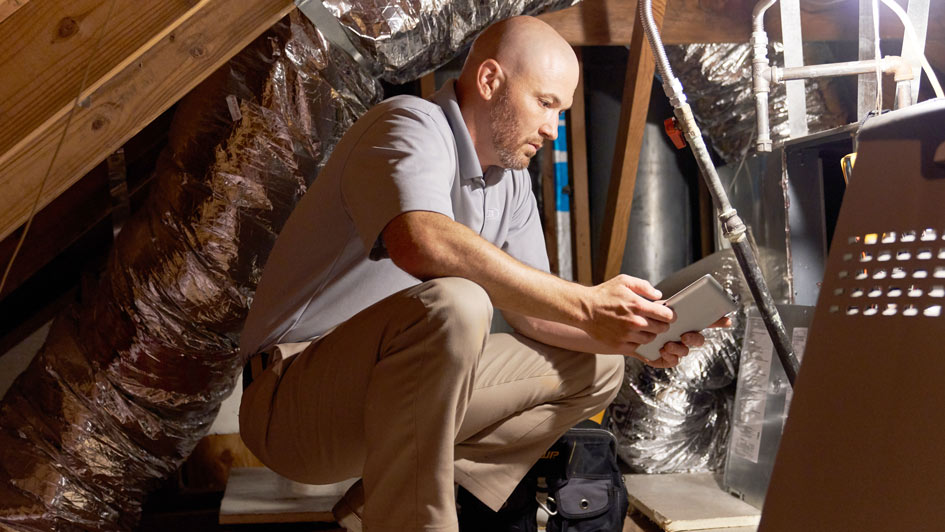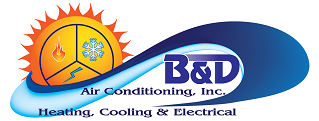
Where you aware that more than half of your home’s energy costs are from your heating and cooling? This is why it’s so important to secure an energy-efficient HVAC system.
Furnace efficiency standards were last modified to an Annual Fuel Utilization Efficiency (AFUE) rating of 80% in 2015. This rating system calculates how effective your furnace is at converting natural gas into heat. An AFUE rating of 80% means your furnace will waste about 20% of the fuel it uses while creating heat.
In 2022, President Biden revealed new energy-efficiency standards for residential gas furnaces that would substantially decrease emissions, save money and promote sustainability.
These revised standards are projected to:
- Save Americans $1.9 billion annually.
- Lower carbon emissions by 373 million metric tons and methane emissions by 5.1 million tons over three decades, the equivalent of what 61 million homes emit annually.
Starting in 2029, the updated rule would require all new gas furnaces to feature AFUE ratings of 95%. This means furnaces would combust nearly 100% of the gas into usable heat.
With these facts in mind, you may be asking yourself "what happens to my existing furnace"? As of now, not much, as the proposed rule wouldn’t go into effect until 2029 at the earliest and will not affect furnaces that are already in use.
But if you are considering furnace replacement in soon, highly energy-efficient furnaces are already available. Learn how these furnaces can help you save on energy bills now.
Guide to Condensing Furnaces
How Condensing Furnaces Work
A condensing furnace is a style of heating system that uses a secondary heat exchanger to capture wasted heat from the furnace's exhaust gases. This decreases the extent of energy wasted, enhances energy efficiency and lowers CO2 emissions. It also involves less natural gas to generate the same volume of heat in comparison to other types of furnaces.
How Condensing Furnaces Differ from Non-Condensing Furnaces
The biggest difference between a condensing furnace and a non-condensing furnace is that the former uses a secondary heat exchanger to capture any wasted heat from its exhaust gases, while the other does not.
Equipment Lifespan
The life span of a condensing furnace will depend on the brand, model and other factors. In most cases, a condensing furnace is likely to last between 10-20 years with sufficient maintenance and regular service. If you don’t schedule routine maintenance, the unit may not last as long.
Why Condensing Furnaces Cost More
For the most part, condensing furnaces enhanced precision is a lot more efficient than standard, single-speed furnaces, as it only uses the minimum amount of energy required to heat your home, resulting in more savings on your utility bill.
Most variable-speed furnaces are condensing furnaces, although a handful are available in non-condensing models with lower AFUE ratings. If a manufacturer wants a furnace to be classified as a condensing furnace, it must offer an AFUE rating of 90% or higher.
Do Variable-Speed Furnaces Run Constantly?
A variable-speed furnace doesn’t need to stay on all the time. Rather, it runs at different speeds according to the temperature in your Safford home as well as the amount of energy it uses to sustain that temperature.
When sufficient energy is required to maintain your preferred temperature level, the furnace will switch to a higher speed in order to keep up with demand. Precise fan speeds offer more efficient heating in your home while also offering quieter operation.
Guide to Two-Stage Furnaces
Two-Stage Furnaces: What They Are and How They Work
A heating system with two settings of operating - high and low - is called a two-stage furnace. During the low stage, the furnace operates at a reduced capacity as a way to maintain the desired temperature in your home more efficiently. During the high stage, the furnace will instead run at maximum capacity to meet demands for increased heat. With a two-stage furnace, you can enjoy enhanced energy efficiency and comfortable temperatures everywhere in your home.
While two-stage furnaces are very efficient, not all all models are condensing furnaces.
Does a Two-Stage Furnace Function All the Time?
A two-stage furnace should not run constantly. In the low stage of operation, the furnace operates at limited capacity in order to sustain a planned temperature more efficiently within your home. When a greater demand for energy is needed to reach the set temperature, the heating system shifts to its high stage and runs at full capacity. As a result, two-stage furnaces are proven to help reduce energy costs without operating continuously.
Comparing Two-Stage and Variable-Speed Furnaces
Two-stage furnaces have two stages of functionality, low and high. During the low stage, the furnace works at reduced capacity as a way to sustain a desired level of comfort within your home. When additional warmth or cooling is desired, the furnace will shift to its high stage and operate at peak capacity.
Variable-speed furnaces, meanwhile, can work at a variety of speeds in order to keep a comfortable temperature at home. As such, variable-speed furnaces offer greater savings on your utility bills .
Differences Between One- and Two-Stage Furnaces
One-stage furnaces have a single stage of operation and operate either at full power or not at all. This translates to higher energy bills because the furnace is always running in order to maintain a desired temperature at home.
Two-stage furnaces, on the other hand, have two stages of operation, low and high. During the low stage, the furnace runs at reduced capacity in order to maintain the desired temperature more efficiently. When additional warmth or cooling is necessary, the furnace will change over to its high stage and operate at peak capacity.
Make Your Furnace Installation Appointment with B&D Air Conditioning Today
Modern furnace technology can be confusing. That’s why B&D Air Conditioning specialists are here to help with a free, no-pressure quote for furnace installation. We’ll assess your home, your heating needs and your budget before helping you find the right solution. Call us at 928-506-3166 to get started today!
